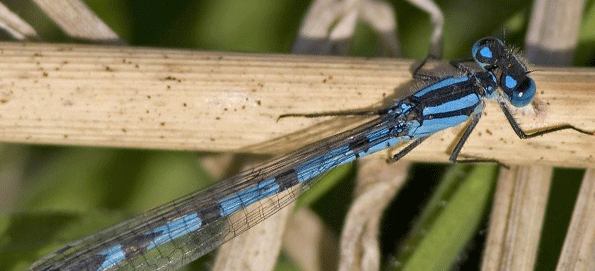
Wildlife in June
Moors Valley is a fantastic place to see dragonflies and damselflies buzzing around the ponds and rivers. By June they will be particularly active trying to find a mate to breed.
The impressive number of dragonflies and damselflies that can be found at Moors Valley has led to the river systems at the park to be designated a Site of Special Scientific Interest and also why the dragonfly was chosen as the symbol of Moors Valley.
You can easily tell the difference between dragonflies and damselflies by the way that they hold their wings. Dragonflies will always hold their wings out like an aeroplane when they are not flying whereas damselflies can fold them along their body.
Young dragonflies live in water as larvae for up to 5 years and emerge only as flying adults to find a mate and breed. They can be seen at Moors Valley between May and September.
By mid May the adult dragonflies and damselflies have started to emerge and quickly go about breeding. The male adults attach themselves to the females using their claspers on the end of their tails whilst she lays the eggs on submerged wetland plant leaves or loose in the water. Some dragonflies are fiercely territorial and you can often witness spectacular aerial clashes between one male and another.
A walk along the banks of Moors River may well result in a flurry of wings of the beautiful demoiselles and banded demoiselles, as they take to the air. They are unmistakeable as they have distinctive black patches on their wings. These damselflies emerge in early June, and will normally fly on and soon settle once again on another leaf. By mid June all damselfly species will have emerged as adults.
June is also a great month to see flowers. The warm weather induces a massive increase in the diversity of flowering plants. Woodland flowers are the exception to this but the rivers and meadows within the park will be filling with colour.
Other things to look out for:
- Ragged robin, dogrose and foxgloves are in flower.
- June is a good month for moths – active around dusk on warm summer evenings
- Nightjars arrive from Africa during April and May to breed in Britain. June is a good time to join a Ranger-led evening walk in search of these allusive nocturnal birds and listen for their distinctive ‘churring’ call as dusk falls. They make their nests on the ground in areas of lowland heath or where trees have been cut down.







